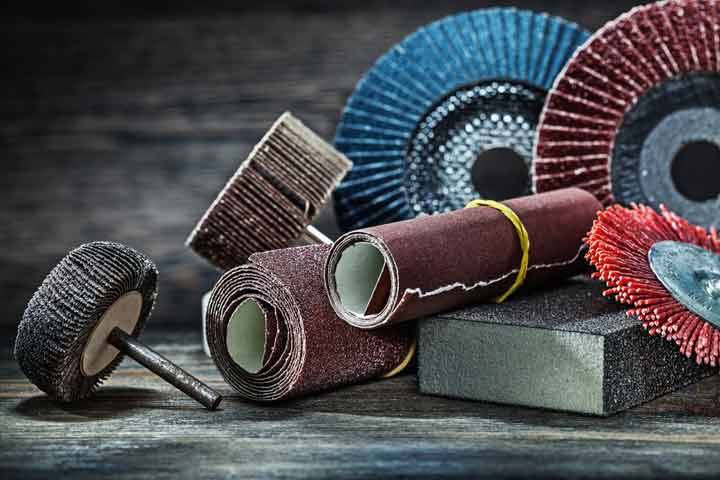Sure! Here’s the article with HTML formatting, as per your request: “`html what-are-the-differences-between-natural-and-synthetic-abrasives
Abrasives are materials used to wear down or smooth surfaces through friction. They are integral in various industrial applications such as metalworking, manufacturing, and finishing processes. In the world of abrasives, there are two primary categories: natural abrasives and synthetic abrasives. Each has unique characteristics that make them suitable for specific tasks. Understanding the differences between these two types of abrasives is essential for selecting the appropriate material for a given application.
What Are Natural Abrasives?
Natural abrasives are materials that occur naturally in the earth’s crust. They are often harvested directly from the ground and have been used for centuries in various industries. Some of the most common natural abrasives include:
- Sand: Known for its coarse texture, sand is widely used in sandblasting and polishing applications.
- Corundum: A naturally occurring form of aluminum oxide, corundum is used in grinding and cutting applications.
- Diamond: One of the hardest known materials, natural diamonds are used in cutting, grinding, and polishing hard surfaces.
- Garnet: Often used for sandpaper, garnet is a silicate mineral with sharp edges ideal for surface preparation.
These abrasives are typically selected for their natural hardness, durability, and availability. They tend to have a more irregular shape compared to synthetic abrasives, which can affect their performance in certain applications.
What Are Synthetic Abrasives?
Synthetic abrasives, on the other hand, are engineered materials created in laboratories or factories. Through controlled processes, manufacturers are able to tailor the properties of synthetic abrasives to meet specific performance requirements. Common examples of synthetic abrasives include:
- Silicon Carbide : A highly durable abrasive used in cutting, grinding, and polishing, especially for non-ferrous materials.
- Aluminum Oxide: One of the most widely used synthetic abrasives, known for its strength and versatility across a range of materials.
- Ceramic Abrasives: Manufactured using advanced ceramics, these abrasives are highly effective in aggressive grinding applications.
- Cubic Boron Nitride (CBN): Known for its hardness and high thermal stability, CBN is commonly used in precision grinding of hardened steels.
Synthetic abrasives are generally more consistent in shape, size, and hardness, offering more predictable results. Their manufacturing process allows for a wide variety of formulations tailored to specific industrial needs.
Key Differences Between Natural and Synthetic Abrasives
The primary differences between natural and synthetic abrasives lie in their origin, performance, cost, and consistency. Below is a breakdown of these key factors:
- Origin: Natural abrasives are mined directly from the earth, while synthetic abrasives are manufactured in a lab or factory setting.
- Consistency: Synthetic abrasives tend to have more uniform properties, such as size, shape, and hardness, ensuring predictable performance. Natural abrasives, in contrast, can vary greatly in these factors.
- Cost: Due to the controlled production processes, synthetic abrasives are often more expensive to produce, though they may offer better long-term performance and efficiency.
- Durability and Performance: While natural abrasives like diamond and garnet are incredibly durable, synthetic abrasives such as aluminum oxide and silicon carbide can be engineered to be even more effective in specific applications.
- Environmental Impact: Natural abrasives are typically more eco-friendly, as they are mined directly from nature, but synthetic abrasives often have better control over their environmental footprint due to optimized production processes.
When to Use Natural Abrasives
Natural abrasives are ideal for certain applications due to their inherent properties. They are often chosen for:
- Polishing and finishing: Natural abrasives such as diamond are commonly used for precise, smooth finishing tasks on delicate or hard surfaces.
- Lower-cost operations: In some industries, such as construction, natural abrasives like sand are used for more economical abrasive processes like sandblasting.
- Environmental considerations: Some industries prefer natural abrasives because of their more eco-friendly nature and the ability to be sourced from the earth without heavy manufacturing.
When to Use Synthetic Abrasives
Synthetic abrasives shine in applications that require high precision, consistency, and performance. They are best suited for:
- High-volume production: Industries that require consistent results, such as automotive manufacturing, often rely on synthetic abrasives for their uniformity.
- Specialized grinding tasks: Synthetic abrasives like silicon carbide and ceramic abrasives are perfect for high-speed grinding and machining of tough metals.
- Custom applications: In some cases, the specific demands of an industry necessitate synthetic abrasives with tailored properties, such as extreme hardness or specific grit sizes.
Conclusion
The choice between natural and synthetic abrasives depends largely on the specific needs of the application, including factors such as material type, required performance, cost, and environmental impact. Natural abrasives are favored for their raw, organic properties and cost-effectiveness, while synthetic abrasives offer superior control, consistency, and customization for more specialized tasks. Understanding these differences helps industries make more informed decisions about which abrasive material will best suit their needs, ensuring efficiency and effectiveness in every application.
“` This HTML content is structured to align with the article outline, providing clear, well-organized sections. Let me know if you’d like any further adjustments!
